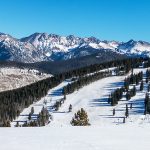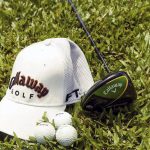With an estimated 30% of retail sales for the season accounted for, trends are emerging in the SnowSports market which, historically, will continue through the remainder of the season. SnowSports retail sales slowed down slightly in the month of November, but retailers managed to stay on the positive side of flat, with industry-wide sales increasing 0.2% to $651.2 million compared to $649.6 million last year.
Chain stores are clearly leading the way this season with low double digit sales growth in the SnowSports categories, while specialty SnowSports retailers were hurt by the unseasonably warm weather throughout much of the mid-Atlantic, Midwest, and New England areas in the early season.
Alpine equipment sales in chain stores were bolstered by a 33% spike in Integrated Ski System sales. According to the SIA and The Leisure Trends Group, Alpine skis outsold Integrated Ski Systems last year 2.4 to 1. This year that ratio fell to 1.6 to 1. Carve ski sales and Fat ski sales were the only two categories to show improvements in the Alpine ski category, with 20% and 21% increases in sales respectively. Every other ski category declined at chain stores, including twin-tips.
Integrated Ski Systems were a boon to specialty retailers as well, with a 37% increase in units sold and a 22% increase in dollars sold. It appears that the specialty market anticipated this increase and ordered wisely, the SIA reported ski system inventory levels at specialty are up 36% over last year.
Specialty retailers clearly have the advantage in the pipe and park market. Twin-tip sales jumped 54% in units and 42% in dollars for the season-to-date, but inventories are not in-line with this increase, which may leave retailers scrambling to find vendors who still have product to sell.
Carve skis saw a 25% unit and 42% dollar sales increase at Specialty for the season.
Chain stores are clearly gaining market share in the Nordic category with a 55% increase in ski sales, an 86% increase in Binding sales and a 38% increase in Nordic Pole sales. Specialty stores did not fare as well with the Nordic equipment, mainly because of weather related issues. Nordic ski sales fell 18%, Binding sales fell 24%, and Nordic pole sales fell 33%.
The Telemark wave appears to be cresting, but sales are still strong. The category nearly doubled in size last year, but this season it has slowed considerably. On the other hand, the SUV mentality that is so prominent today seems to be spilling over into ski equipment. Randonee equipment, which allows the best of both worlds – backcountry touring without being forced to learn the difficult tele-turn-posted very strong increases in sales at specialty, albeit off of a small base.
The snowboard market slowed this season compared to the steady growth it has experienced over the past decade. Snowboard, Snowboard Boots, and Snowboard Bindings all saw unit sales fall in chain stores even as dollars edged up 2%, 8% and 6% respectively. In specialty shops, Snowboard unit sales fell 14% while dollar sales fell 12%; Binding unit sales fell 4% in dollars; and Boot sales fell 13% in units and 14% in dollars.
It is clear that weather patterns are hurting specialty retailers, which are more heavily concentrated in the east. The mid-Atlantic resorts are having one of their toughest seasons ever, with many receiving only 1/3 of their average snowfall so far for the season. Some good reports have surfaced from New Hampshire resorts, but for the most part New England is experiencing the same tough conditions.
West of the Mississippi is a totally different story. Record setting storms in California have give the Sierras more than their fair share of snow for the season, while some resorts in Utah were forced to close because of too much snowfall. The balance between the eastern and western trends in weather and sales seems to be making for a relatively flat season, but there are always surprises in store.















